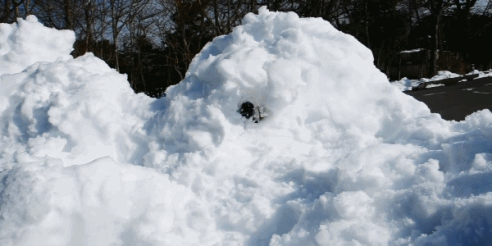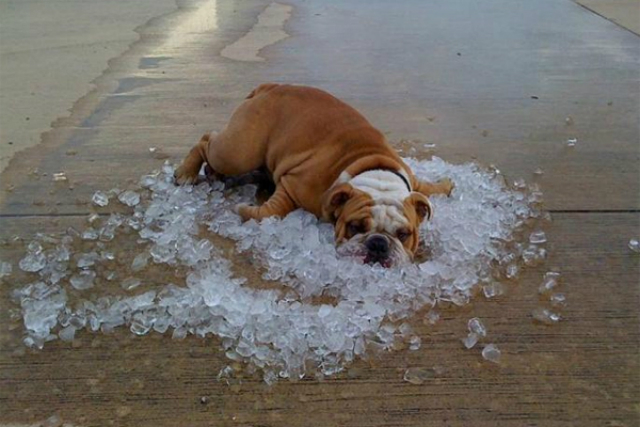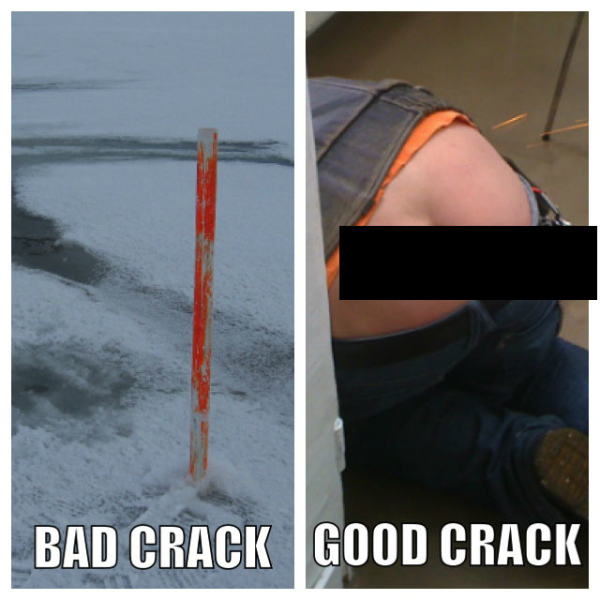Winter can be full of surprises.


Some, like the one above, are good. But some, like falling through ice, are bad.
If you and your dog are outdoorsy types — or hey, maybe you guys are just working on your ice skating routine — you’ll probably spend some time trekking through some tundra this season. In order to protect you and your pup from dangerous ice this winter, here are some helpful safety tips to keep everyone happy and safe and breakdancing like a pro on ice:


1. Measure the ice.
You can try to eyeball ice to see if it’s thick enough to step on, but the best way to test it is to actually measure it. You can do this by stabbing an ice chisel into the ice and then measuring that depth with a rod. Or, you can use an ice auger drill or a cordless wood drill. Either way, getting a better sense of the ice’s thickness will help you determine its safety.


2. Steer clear of ice that’s less than three inches thick.
No matter how tiny you and your dog may be, if the ice is less than three inches, your best bet is to avoid it. Ice that’s about four inches can usually sustain activities like walking. Nevertheless, it’s important to keep in mind that ice conditions can change, especially depending on how recently the ice formed. You should also measure in more than one place, since ice thickness varies, particularly over moving bodies of water.
You can read a more thorough guideline here.
3. Look for cracks and colors.
Although measuring is one of the more useful tools, visually assessing the field is also helpful. If you see worrisome signs like cracks, dark regions, or slushy areas, these are indications that the ice is weak and can’t support weight. Here’s a helpful guide:


Similarly, the color of the ice can often be a useful indicator of its safety. Clear, blue or green ice may be thick enough to walk on, whereas dark ice and white ice are weaker (because it likely has only air or snow trapped inside), and should be avoided.
Oh, and don’t ask your dog for help — they’re color blind.


4. Know rescue protocol.
If anyone/anything falls into icy water, the first thing to do is to call 911. While 911 is well-equipped for these sitautions, in the meantime, you can attempt to reach the person by using a stick, rope, or ladder — anything that is long-reaching. Everyone should avoid standing up on the ice until they are far away, and those exposed to ice water should immediately receive hypothermia treatment.


5. Keep an eye on that pup!
Your dog loves you. So if they’re watching you glide around on a frozen lake, for example, they’re going to want to join in the fun. Keep a close eye on your dog at all times, or better yet, put them on a leash. If you can’t rely on your dog to stick close and come when called, you’re best option is to keep it on a leash. And if your dog does fall in, again, call the professionals.
Jake: Vail’s Newest Patrol DogVideo of new Vail Ski Patrol recruit, Jake, playing in the snow this morning. Shot 100% on #GoPro
Posted by Vail on Thursday, 9 April 2015
While everyone loves heroic stories of people pulling their pets from icy water, you could fall under, too, so it’s best to leave it to rescue professionals.
6. Avoid poorly lit areas.
Don’t get me wrong, a romantic moonlit skate sounds absolutely divine, especially if you’re trying to reenact beautiful moments from beautiful movies.


But with limited lighting, it’s more difficult to detect the ice’s safety conditions. Falling into icy water can really ruin the mood, so if the lighting isn’t great, your best bet is to hit the ice during the day. Like this boss.






